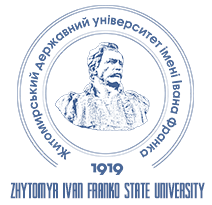Online risks and information protection of children on the pages of pedagogical press of the USA
DOI:
https://doi.org/10.35433/pedagogy.3(98).2019.69-77Keywords:
the Internet, risks of the Internet usage, social networks, media literacy, media education, critical thinking, information protection, evaluation and selection of information, control technologies, unacceptable content.Abstract
The Internet is the most popular mass media among young people. It not only provides children with powerful learning and entertainment opportunities, but it is also an environment where they can face many risks. That is why the problem of information protection of children, especially online safety, is one of the priority areas for the development of pedagogy and education not only in the USA but also in Ukraine. Publications array focusing on the main methods and tools for overcoming online risks has been analyzed. The article deals with the main types and classifications of online risks: content risks, communication risks, electronic risks and cyberbullying. Cyberbullying classification is provided: trolling, harassment, impersonation, denigration, happy slaping, fraud, online alienation, sexting and cybergrooming. The author highlights American legislation on child protection on the Internet. The strategies for implementing the above legislation into the American School System are described. The main strategies of information protection of children are identified and analyzed: media literacy, critical thinking, awareness of parents, children and teachers about online risks, adherence to the rules of online behavior. The terms media literacy, media education and critical thinking are revealed. The article provides criteria for evaluating online resources that help children effectively analyze, comprehend, and critically select information. Issues of content, source and data evaluation, site structure that develop critical skills for evaluating an online resource are described. The author defines and analyzes the main tasks of lessons for the formation of information protection of children on the Internet. The basic knowledge and skills that children need to have for working safely on the Internet are identified.
References
Children's Internet Protection Act (CIPA). Retrieved from https://www.fcc.gov/consumers/guides/childrens-internet-protection-act [in English].
Children's Online Privacy Protection Rule (COPPA). Retrieved from https://www.ftc.gov/enforcement/rules/rulemaking-regulatory-reform-proceedings/childrens-online-privacy-protection-rule [in English].
Considine D., Haley G. (1999). Visual Messages. Englewood, Colorado: Teachers Ideas Press, 34 [in English].
Feilitzen, C., von, Carlsson, U. (2002). Children, Young People and Media Globalisation. Goteborg: NORDICOM, Goteborg University, 67-154 [in English].
Frechette, J. (2005). Cyber-Democracy or Cyber-Hegemony? Exploring the Political and Economic Structures of the Internet as an Alternative. Library Trends, vol. 53, № 4, 555-575 [in English].
Hobbs, R. (2007). Reading the media: media literacy in high school English. NY: Teachers College, Columbia University, 190 [in English].
Hobbs, R. (2011). Digital and media literacy: connecting culture and classroom. Thousand Oaks, CA: Corwin Press, 214 [in English].
Johnson, D. (2001). Computer Ethics. Upper Saddle River. NJ: Prentice Hall, 103-187 [in English].
Kubey, R. (1997). Media Education: Portraits of an Evolving Field. Media Literacy in the Information Age. New Brunswick, London: Transaction Publishers, 2-9 [in English].
Livingstone S., Haddon L. (2009). Introduction: kids online: opportunities and risks for children. In: Livingstone, Sonia and Haddon, Leslie, (eds.). Kids online: opportunities and risks for children. The Policy Press, Bristol, UK, 1-6. [in English].
Milosevic, T. (2015). Cyberbullying in US Mainstream Media. Journal of Children and Media, vol. 9, issue 4, 492-509 [in English].
Potter, W. (2011). Media literacy. Los Angeles: Sage, 243-401 [in English].
Tyner, K. (1998). Literacy in the Digital World: Teaching and Learning in the Age of Information. Mahwan, NJ: Lawrence Erlbaum Associates, 78-80 [in English].
Vaala, S., Bleakley, A. (2015). Special Issue: Children and Media in the Family Context. Monitoring, Mediating, and Modeling: Parental Influence on Adolescent Computer and Internet Use in the United States, vol. 9, issue 1, 40-57 [in English].
Worsnop C. (1999). Screening Images: Ideas for Media Education. Mississauga, Ontario: Wright Communications, 23-26 [in English].
Downloads
Issue
Section
License
Copyright (c) 2019 A. Paukova

This work is licensed under a Creative Commons Attribution-NonCommercial-NoDerivatives 4.0 International License.
Authors published in this journal agree to the following terms:
a) The authors reserve the right to author their work and grant the journal the right to first publish this work under the Creative Commons Attribution License, which allows others to freely distribute the published work with a mandatory link to the authors of the original work and the first publication of the work therein magazine.
b) Authors have the right to enter into separate additional agreements regarding the non-exclusive distribution of the work in the form in which it was published by this journal (for example, posting work in an electronic repository of the institution or publishing as part of a monograph), provided that the reference to the first publication of the work is maintained therein. magazine.
c) Journal policy permits and encourages the submission of manuscripts by the authors on the Internet (for example, in repositories of institutions or on personal websites), both prior to submitting this manuscript to the editorial board and as it contributes to the emergence of productive scientific discussion, and has a positive impact on the promptness and dynamics of citing a published work (see The Effect of Open Access).

 ISSN
ISSN 





